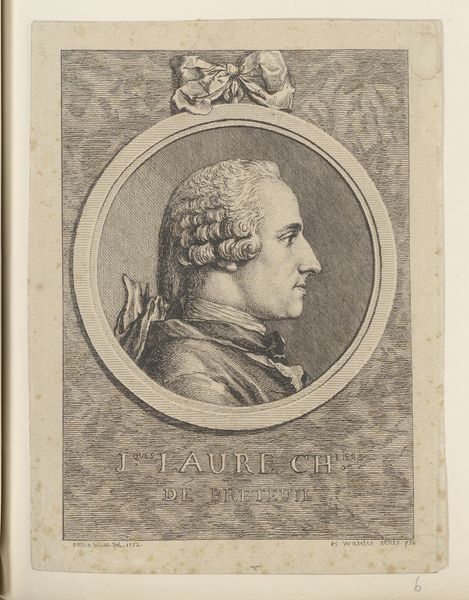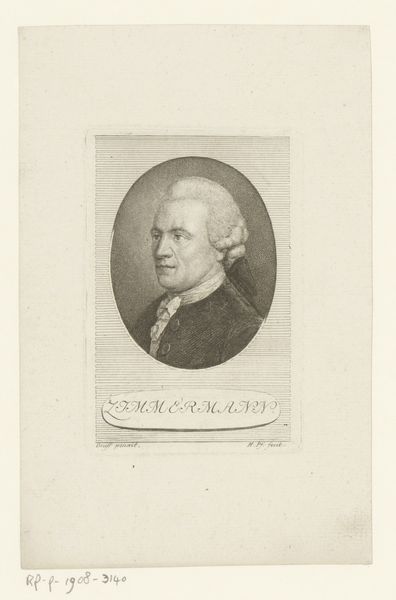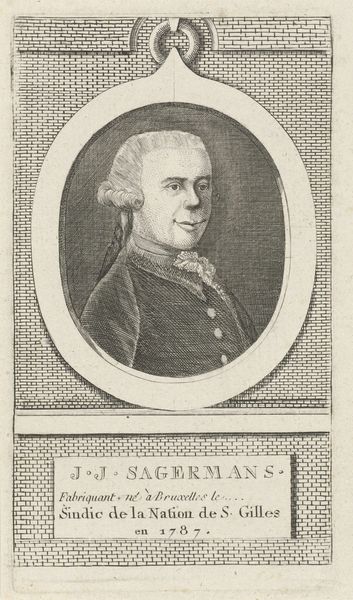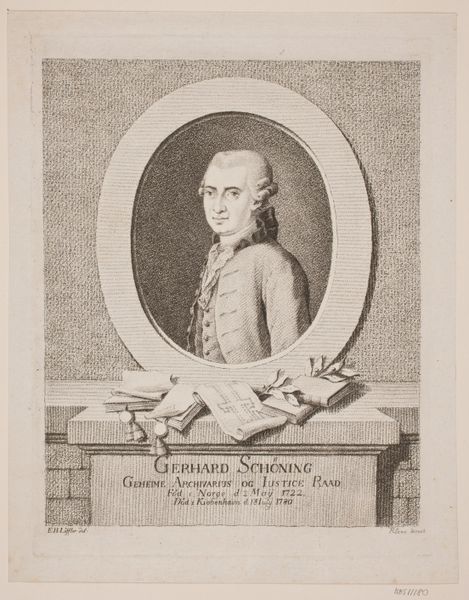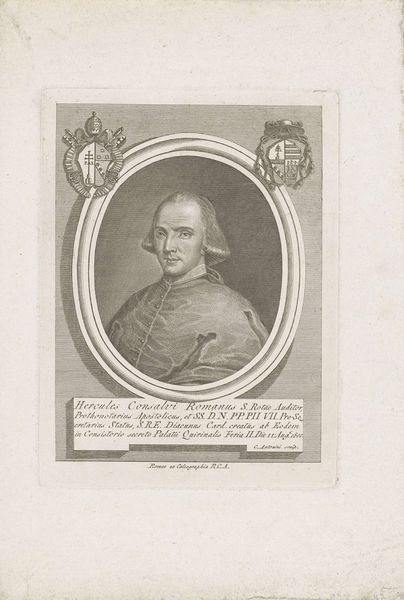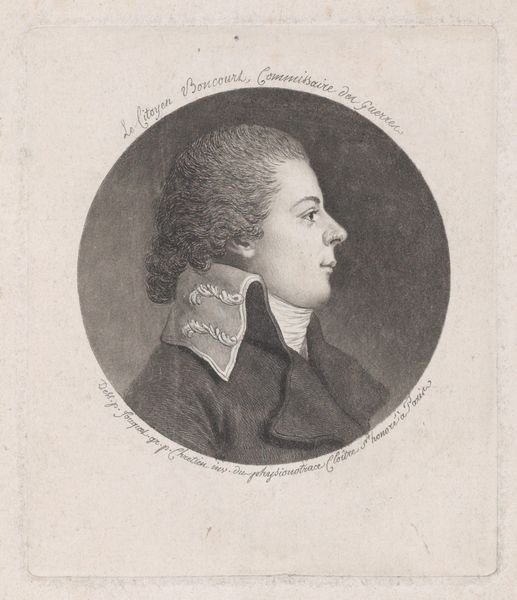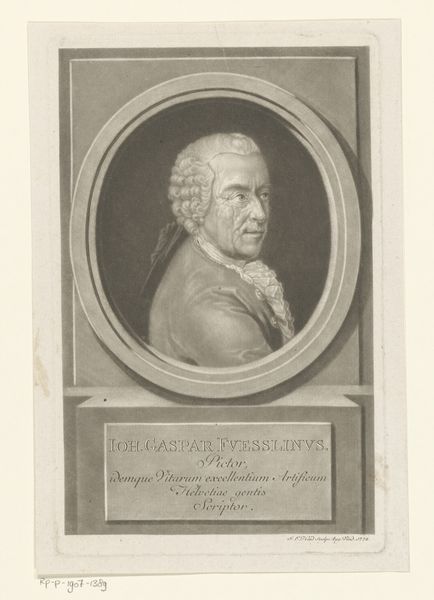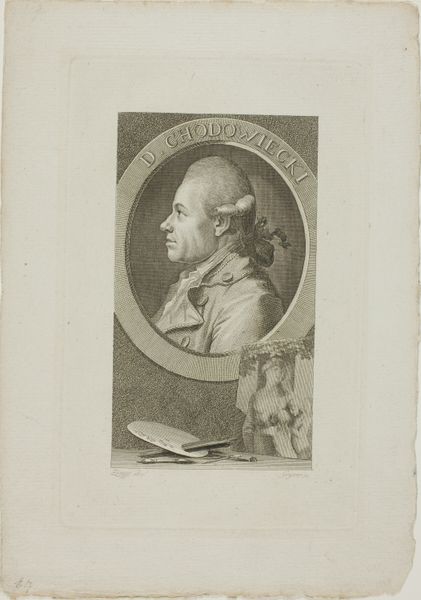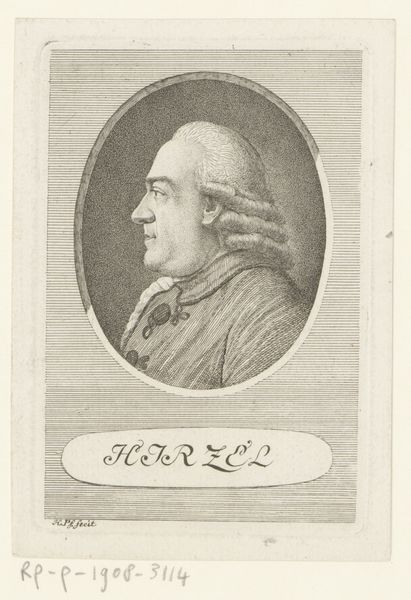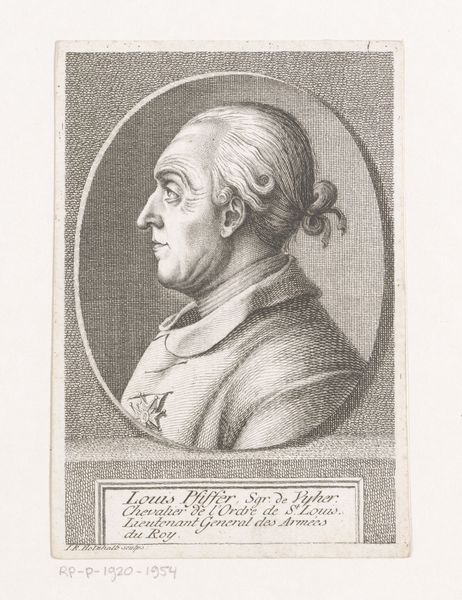
#
pencil drawn
#
aged paper
#
light pencil work
#
photo restoration
#
pencil sketch
#
old engraving style
#
historical photography
#
old-timey
#
19th century
#
pencil work
Dimensions: height 207 mm, width 150 mm
Copyright: Rijks Museum: Open Domain
This engraving of Jan Ingenhousz was made by Domenico Cunego in Rome in 1769. It shows the Dutch biologist in profile, framed by a laurel wreath, with an inscription that refers to his service to the Habsburgs in Vienna. The image is more than a simple likeness. The laurel wreath signals Ingenhousz's accomplishments in the fields of science and medicine. The inscription makes clear that Ingenhousz earned his fame attending to the health of the Austrian royal family, suggesting the close ties between scientific expertise and political power in eighteenth-century Europe. Images like this one circulated widely during the Enlightenment. They helped to establish a visual culture that celebrated scientific achievement, especially where that was linked to the power of the state. Historians consult sources such as letters, scientific publications, and institutional records to understand the context in which images like this were created. These sources help us to see how the production of art and the development of science were intertwined with the social and political structures of the time.
Comments
No comments
Be the first to comment and join the conversation on the ultimate creative platform.
